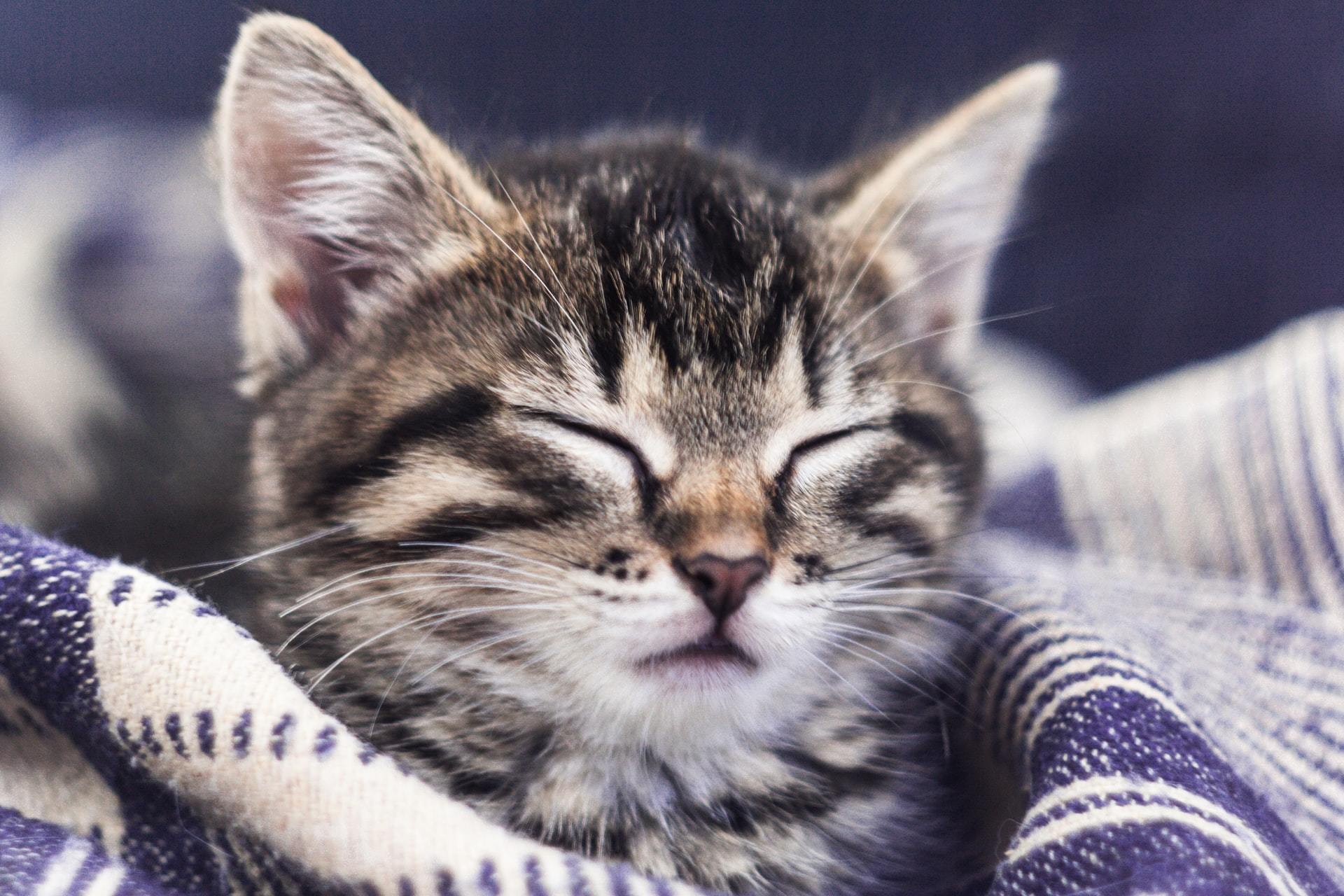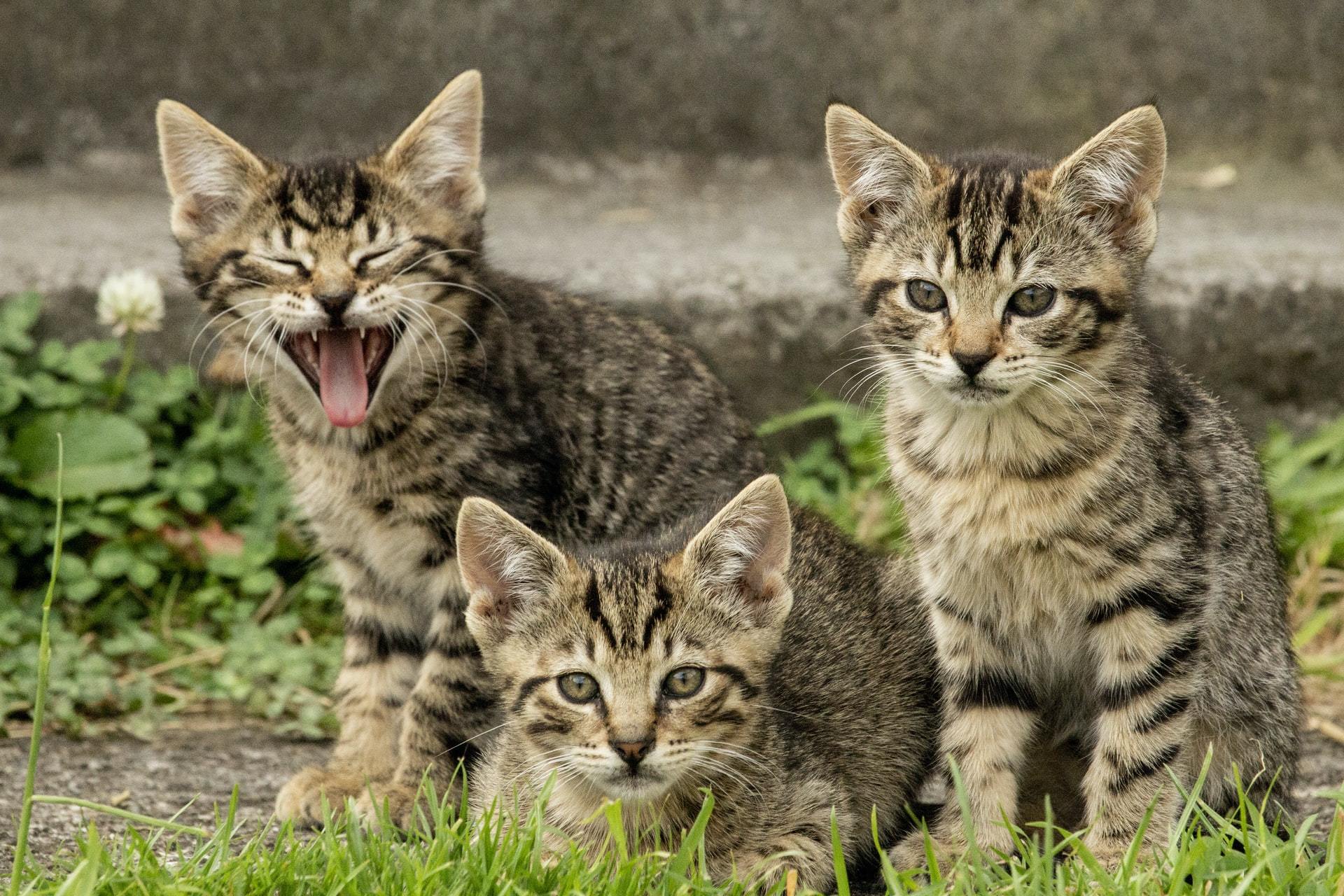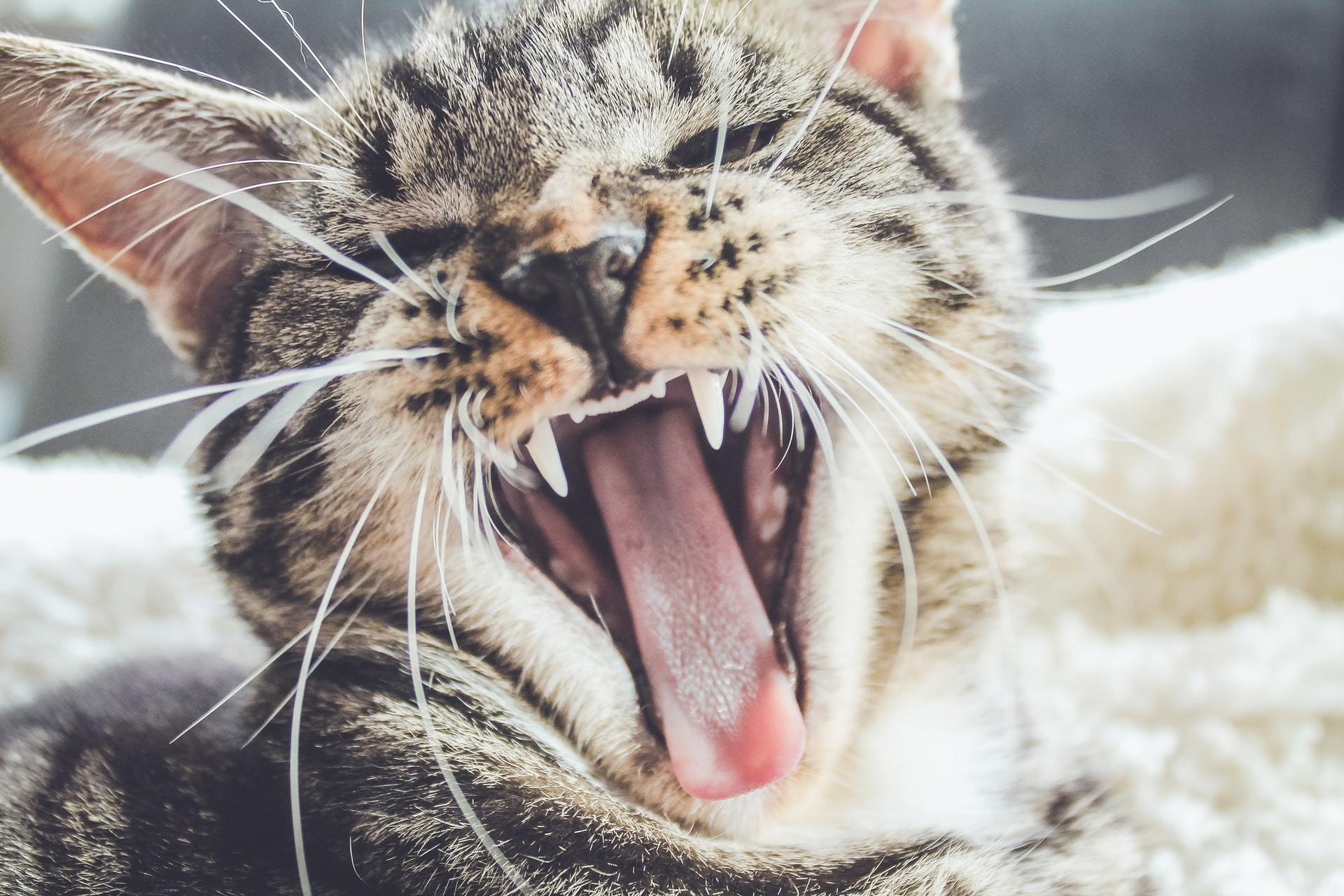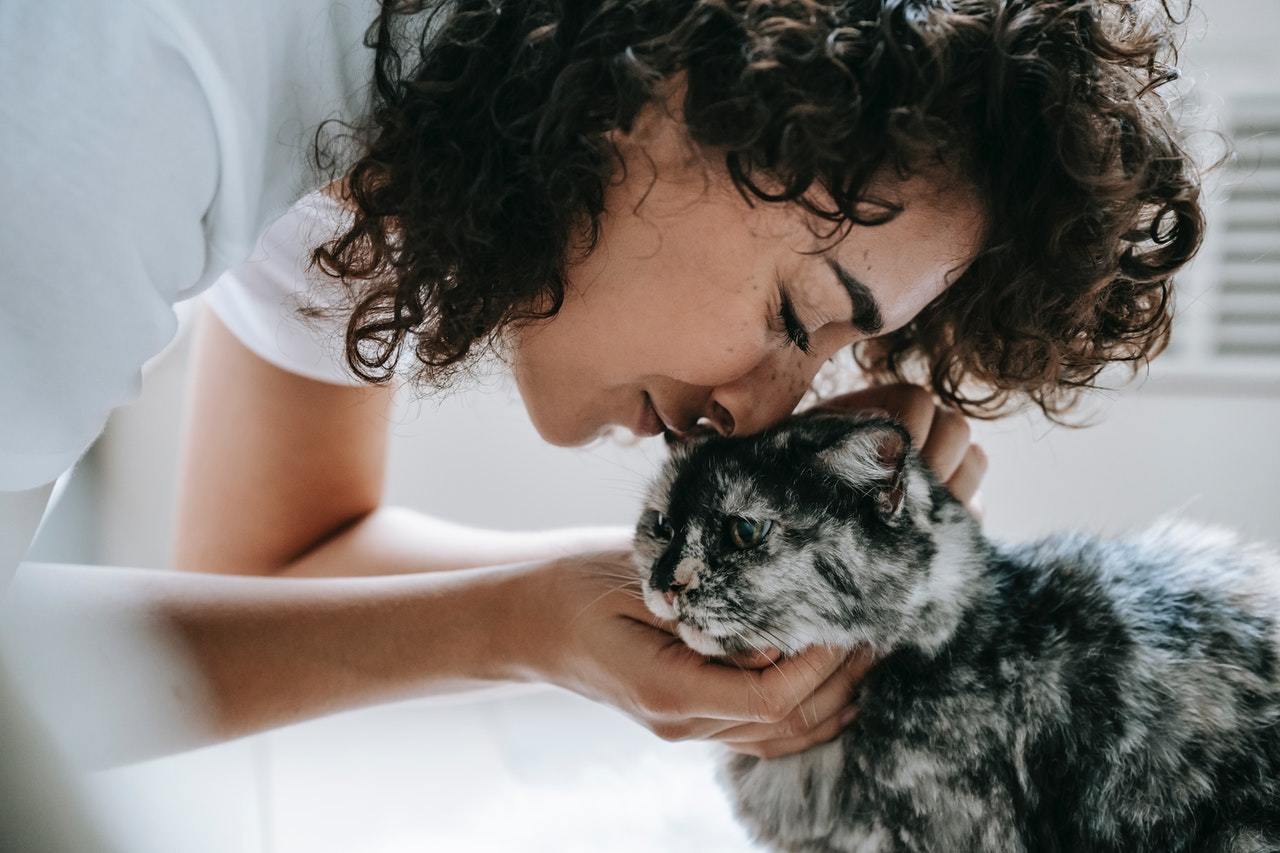Common Diseases in Cats

You love your cat and want to take the best possible care of them, but it can be difficult to know what to monitor for or expect. Like most things in life, there isn’t an easy answer, but let’s briefly discuss what diseases are most common in kittens versus adult cats based on our vets’ experience.
Are you concerned about your pet?
Book a video consultation with an experienced veterinarian within minutes.
- Professional vet advice online
- Low-cost video vet consultations
- Open 24 hours a day, 365 days a year
Common Diseases in Kittens
There are several categories of cat illnesses most common in kittens including parasites (fleas, intestinal parasites, and ear mites), upper respiratory infections, ringworm, and viral infections that can affect a kitten’s overall immune system.
Parasites
The good news about parasites is that most are easily preventable. The bad news is that they can be serious, contagious to humans and other pets, and have serious health and even fatal consequences, especially for kittens.
1. Intestinal (GI) worms and protozoa can cause weight loss, a pronounced pot-bellied appearance, vomiting, diarrhea, dehydration and may or may not affect a kitten’s appetite. They are often diagnosed via fecal floatation and require specific treatment for the specific type of parasite. Sometimes, worms are evident in the kitten’s stool, but oftentimes, your vet must look for eggs or protozoa under the microscope.
For more information on individual worms that are common in cats and kittens, check out our article, How to Treat and Prevent Intestinal Parasites in Cats.
2. Fleas and ear mites are more readily apparent as they are considered external parasites. Washing your cat with a mild shampoo like Dawn dish soap diluted in water and using a flea comb can help remove fleas from the coat. Frequent vacuuming and laundering of bedding helps to remove the eggs from the environment.
Ear mites, which can appear as black debris and itchy ears, require an ear swab to be accurately diagnosed and treated by your vet. It’s important that you not put anything into your cat’s ears unless directed by your vet.
Depending on your kitten’s age, they may be able to start a heartworm/flea prevention. Remember, though, these require repeated use every month to fully eradicate fleas and other parasites and keep your cat healthy. Yes, indoor cats should be on prevention too.
Upper Respiratory Infections

Upper respiratory infections (URI) are a complex of easily transmissible bacteria and viruses that can affect the upper respiratory system, eyes, and spread to the lower respiratory system causing pneumonia. Signs of a URI include green or yellow discharge from the eyes and nose, sneezing, decreased appetite, lethargy, squinting, and difficulty breathing. Oftentimes, these infections in cats require antibiotics, eye medications, nebulization, and/or antiviral medications.
Calci and herpes viruses are often components of URIs in cats. Although not transmissible to humans, they are transmissible to other cats and last a lifetime. Most cats have exposure to URIs but remain asymptomatic. Other cats will continue to have flare-ups throughout life during times of stress. Lysine is an amino acid that can help reduce the symptoms of a herpes virus flare-up. Your vet can help you to find the right product to help your cat.
Ringworm
Ringworm is a fungal infection that is contagious to humans and other animals. It can occur at any age but seems to be more common in kittens. It can appear as hair loss and scaly, itchy skin especially on the ears, but location and itchiness can vary. Your vet may want to run a fungal culture, skin scrape, or use a black light to identify and diagnose it properly. Anti-fungals are required for the treatment of ringworm.
Common Viral Infections in Cats and Kittens

If you were wondering, “can cats get viruses,” the answer is certainly yes. There are a variety of viral infections in cats that you’ll want to be aware of for your feline.
Feline Immunodeficiency Virus (FIV), Feline Leukemia Virus (FeLV), and panleukopenia are very different diseases but all affect your cat’s white blood cells which are needed to fight infection. All are contagious and common cat diseases for which there is no cure, only management of symptoms. The good news is that there are vaccines that can prevent panleukopenia (the feline distemper vaccine) and FeLV.
1. Feline Leukemia Virus (FeLV) is a disease that is typically transmitted through saliva from nose-to-nose contact or bite wounds. It can also be transmitted through feces, mutual grooming, or shared toys or dishes. FeLV can also be spread from the mother via milk and blood during pregnancy.
Because FeLV causes immunosuppression and anemia (low red blood cells) it can present as lethargy, pale gums, difficulty breathing, and various chronic infections. Treatment can require blood transfusions and supportive care based on symptoms.
All cats should be tested for feline leukemia before being introduced to other cats. Currently, the FeLV vaccine is only recommended for outdoor cats. FeLV-positive cats should be kept separate from other cats.
2. Panleukopenia, also called feline distemper, is spread oronasally (through contact with the mouth or nose) and causes depression, lethargy, fever, vomiting, and diarrhea. It can be diagnosed through testing of a fecal sample but is not commonly done. Treatment is primarily supportive care. Fortunately, most cases are asymptomatic or mild, but it can be fatal especially to kittens.
3. Feline Immunodeficiency Virus (FIV) is similar to human HIV but it is NOT transmissible to humans. FIV is often transmitted through milk and blood from the mother. After birth, it passes through contact with bodily excretions. Just like HIV, FIV causes immunosuppression and can manifest in myriad ways. Commonly, FIV-positive cats will have chronic URIs or other infections.
A blood test is required to test for FIV, and supportive care is provided as needed. Unfortunately, there are still no vaccines for this disease. It is important to have new cats tested for FIV and FeLV before exposing them to other cats.
Common Diseases in Adult Cats
Not surprisingly, adult cats are susceptible to or may have already caught many of the diseases that kittens acquire, such as parasites (fleas, intestinal worms, and ear mites) and viruses causing URI complex, FeLV, FIV, and panleukopenia. However, as a cat ages, it can develop additional issues such as diabetes, urinary tract disease, dental disease, cancers, chronic kidney disease (CKD), hyperthyroidism, or hypertrophic cardiomyopathy (HCM).
Diabetes in Cats
Diabetes mellitus is a disease that can often be prevented through weight management. We know that obese cats are at greater risk of developing diabetes.
Diabetes is a disease that either affects insulin production or response. This causes the blood sugar to stay in the blood rather than going to the brain, muscles, and other tissues that need the sugar for energy. Diabetic cats often have a voracious appetite but lose weight, drink and urinate more, and often have vomiting and diarrhea.
Diabetes is diagnosed through blood work, including a blood glucose curve and fructosamine tests. Management is via diet, weight management, and insulin injections. This disease can increase the frequency of urinary tract infections as excess sugar in the blood tends to spill over into the urine. Sugar in the urine creates a food source for bacteria to thrive. Your vet may recommend routine urine tests (urinalysis) to monitor for infection.
Feline Lower Urinary Tract Disease
Feline Lower Urinary Tract Disease (FLUTD), also referred to as Pandora Syndrome, refers to urinary tract infections but also urinary tract inflammation and inappropriate elimination (urinating outside of the litterbox). Just like Pandora’s box was full of complications, so is FLUTD. This disease tends to have multiple causes without a simple fix.
Oftentimes, affected cats will vocalize, become restless, urinate or defecate outside of the litter box, have bloody urine or strain with repeated attempts to urinate. Stress, genetics, diet, gender, and grooming habits can all contribute to urinary issues.
Cystitis is inflammation of the bladder that is often brought on by stress. It can be as simple as having a company come visit, or needing to increase the number of litter boxes. Identifying sources of stress and limiting them can help. Sometimes, the source of stress can be difficult to identify, like a stray cat outside who is antagonizing your pet that you hadn’t even noticed. Cystitis can cause bloody urine, inappropriate elimination, and straining but no bacteria is present, thus antibiotics aren’t the answer. This can be frustrating to cat owners because there isn’t an easy fix.
Urinary tract infections (UTI) involve the presence of bacteria and can still be induced from stress. However, UTI can also be caused by a narrow urethra, poor grooming especially if a cat is obese, and grit or stones in the bladder or urine.
This is why your vet needs a urine sample and thorough history to properly diagnose and treat your cat. Oftentimes, blood work and x-rays or an ultrasound are also recommended. If a cat has grit or stones which block the urethra completely, a bladder can even rupture which can be fatal. Male cats are more prone to blockage as they have a longer more narrow urethra.
Treatment can require antibiotics, prescription diets, anti-spasmotics to help ease urination, or passing a urinary catheter. Infrequently, a cat can have recurrent urinary blockages for which surgery may be recommended.
Weight management, feeding quality cat food, keeping litter boxes clean and easily accessible, limiting stress, and using pheromone plug-ins, collars, or sprays such as Nature’s Miracle can help reduce the incidence of urinary issues.
Dental Disease in Cats

Dental disease is something that can be more difficult for cat owners to monitor, especially if your cat doesn’t like having his face or mouth touched. Beginning to brush a cat’s teeth when they are young can help slow the progression of dental disease. Signs of dental disease include bad breath, decreased interest in food, rubbing the face, squinting, or facial swelling on one side of the face. The best way to maintain good oral hygiene is to brush your cat’s teeth and keep up to date with routine dental cleanings, which your vet does under general anesthesia.
Common Types of Cancer in Adult Cats
Cancer is an unfortunate disease in all species and can develop in many forms and organs. Symptoms depend on which organs are involved. The most commonly diagnosed cancers in cats are lymphoma, FeLV, mammary cancer, squamous cell carcinoma, and fibrosarcoma.
Lymphoma can be localized, affecting an organ such as a kidney, or be disseminated throughout the intestines. Intestinal lymphoma can cause vomiting, diarrhea, weight loss with a good appetite, and lethargy.
Blood work and x-rays or ultrasound with biopsy are usually required to definitively diagnose any form of cancer. However, there are many other types of cancers affecting any organ in the body. Any mass should be checked by your veterinarian. Oftentimes, cancers cause weight loss despite a good appetite.
Chronic Kidney Disease
Chronic kidney disease (CKD) unfortunately, tends to be more common in cats as they age. The kidneys flush out toxins and help with red blood cell production and regulation of our electrolytes. As the kidneys lose their ability to function, symptoms include increased thirst and urination, vomiting, diarrhea, decreased appetite, weight loss, and in later stages can cause neurological problems and ulcers in the mouth and intestinal tract.
Your veterinarian will need to run blood work, a urinalysis, and possibly x-rays or an ultrasound to properly identify kidney disease. There is a test called the SDMA test which is more sensitive and can detect the early stages of the disease. Catching kidney dysfunction early is important in helping your cat live a longer, healthier life. Kidney disease cannot be cured but it can be managed with the proper diet and supportive care such as fluids.
Hyperthyroidism in Cats
Hyperthyroidism is an endocrine disease that can also cause vomiting, diarrhea, increased thirst, urination, and activity along with weight loss despite an increased appetite. The thyroid is sometimes called the master gland as it regulates metabolism. An overactive or “hyper” thyroid can also affect heart rate and blood pressure which can, in turn, affect the kidneys, heart, and eyes.
It is important to see your vet if you see any of the symptoms above, as hyperthyroidism can be managed with medications that suppress thyroid function, diet, irradiation of the thyroid, surgery, and blood pressure medications. Hyperthyroidism is diagnosed with blood work, including a thyroid test and blood pressure check. Left untreated, hyperthyroidism can cause damage to the heart, blindness, and lead to kidney failure.
Heart Disease in Cats

Hypertrophic Cardiomyopathy (HCM) is often suspected through auscultation of a murmur with a stethoscope, an abnormal EKG, or high blood pressure readings. X-rays help rule out other problems but can’t see inside the heart. HCM causes a thickening of the walls of the heart. This thickening causes changes to the chambers within the heart but rarely does the overall size of the heart change. An echocardiogram is an ultrasound of the heart so that the inside of the heart can be assessed.
Sometimes, there are other causes for heart murmurs such as issues with a valve or heartworms. HCM cannot be cured but can be managed with weight control, blood pressure medications (if needed), and cardiac medications including calcium channel blockers, beta-blockers, or diuretics.
Signs of heart disease that you may notice at home include shortness of breath, open mouth breathing (an emergency), increased respiratory effort, blue or purple gums (an emergency), or increased hiding.
Having a sick cat can feel overwhelming, but the good news is that you don’t have to diagnose your pet. That’s your vet’s job. The important thing for you to do is to keep your cat at a healthy weight, provide quality cat food, plenty of love, fresh water, and brush its teeth. Monitor your cat’s appetite, thirst, and elimination. If you should notice unexplained weight loss, decreased or increased thirst, appetite or activity, changes in urination, vomiting, or diarrhea then you should see a vet. If you have any questions, please schedule a consult with one of our vets and we’ll be happy to help!
Read more:
What You Need to Know About Vaccinating Your Cat
What You Need to Know About Spaying or Neutering Your Cat
Safety Consideration for Indoor and Outdoor Cats
Need to speak with a veterinarian regarding your cat’s health or another condition?
Click here to schedule a video consult to speak to one of our vets. You can also download the FirstVet app from the Apple App Store and Google Play Stores.
More articles about Cat
Are you concerned about your pet?
Book a video consultation with an experienced veterinarian within minutes.